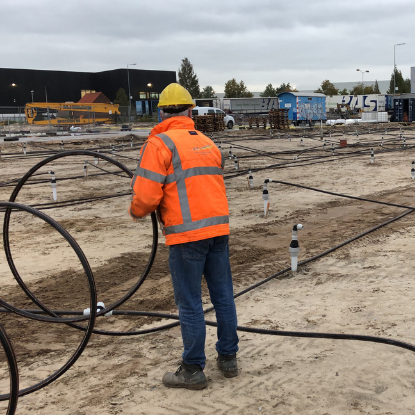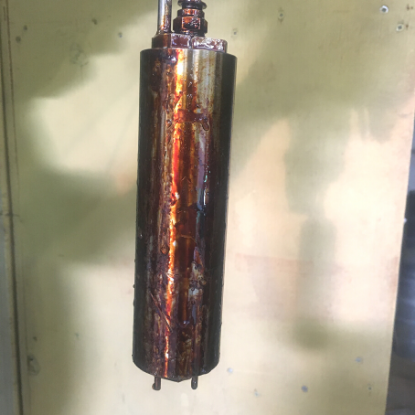Soil Vapour, groundwater and free phase product extraction remove contamination
Multi-phase extraction is an in-situ technique to simultaneously extract multiple phases (for example: water, vapour, liquid free-phase product) from the soil using vacuum. Its great advantage is that this technique will remove all vapour and liquid present at the point of extraction, using one system that separates extracted gasses and liquids. At Groundwater Technology, we often combine MFE with separate further treatment of the extracted liquids and vapours.
Removal of LNAPL (Light Non-Aqueous Product Layer, aka ‘free phase product’)
Some liquid contaminants that are lighter than water may form a layer of separate phase product in the soil. Petroleum hydrocarbons are a prime example. The interactions between the solid phase of soil, liquid phases of groundwater and non-aqueous product, and vapours and gasses are complex. When a large amount of non-aqueous product is released into the soil, it may form a layer of free-floating product that can actually migrate independent of groundwater flow. When LNAPL collects sufficiently in wells, special pumping systems may be deployed to remove the product separate from any groundwater extraction. Groundwater Technology was founded based on the deployment of the oil-water segregating filter system that forms the heart of the ‘Scavenger’ product in LNAPL recovery. Other techniques are based on skimming, where a float is balanced to float on water and sink in product. An opening just above the water surface allows the product to flow under gravity into the float. The recovered product is then pumped to a recovery tank. Creating a ‘cone of depression’ in the groundwater by separately extracting groundwater from the well may improve recovery rates.


Removal of DNAPL (Dense Non-Aqueous Product Layer, aka ‘free phase sinkers’)
Some liquid contaminants that are denser than water may form a layer of separate phase product at the bottom of an aquifer in the soil. Coal tar hydrocarbons and chlorinated solvent, such as perchloroethene and trichloroethene, are prime examples. Removal of DNAPL by phase-separated extraction is possible through recovery wells equipped with specialized pumping systems such as our intrinsically safe pneumatic recovery pumps with no moving parts.